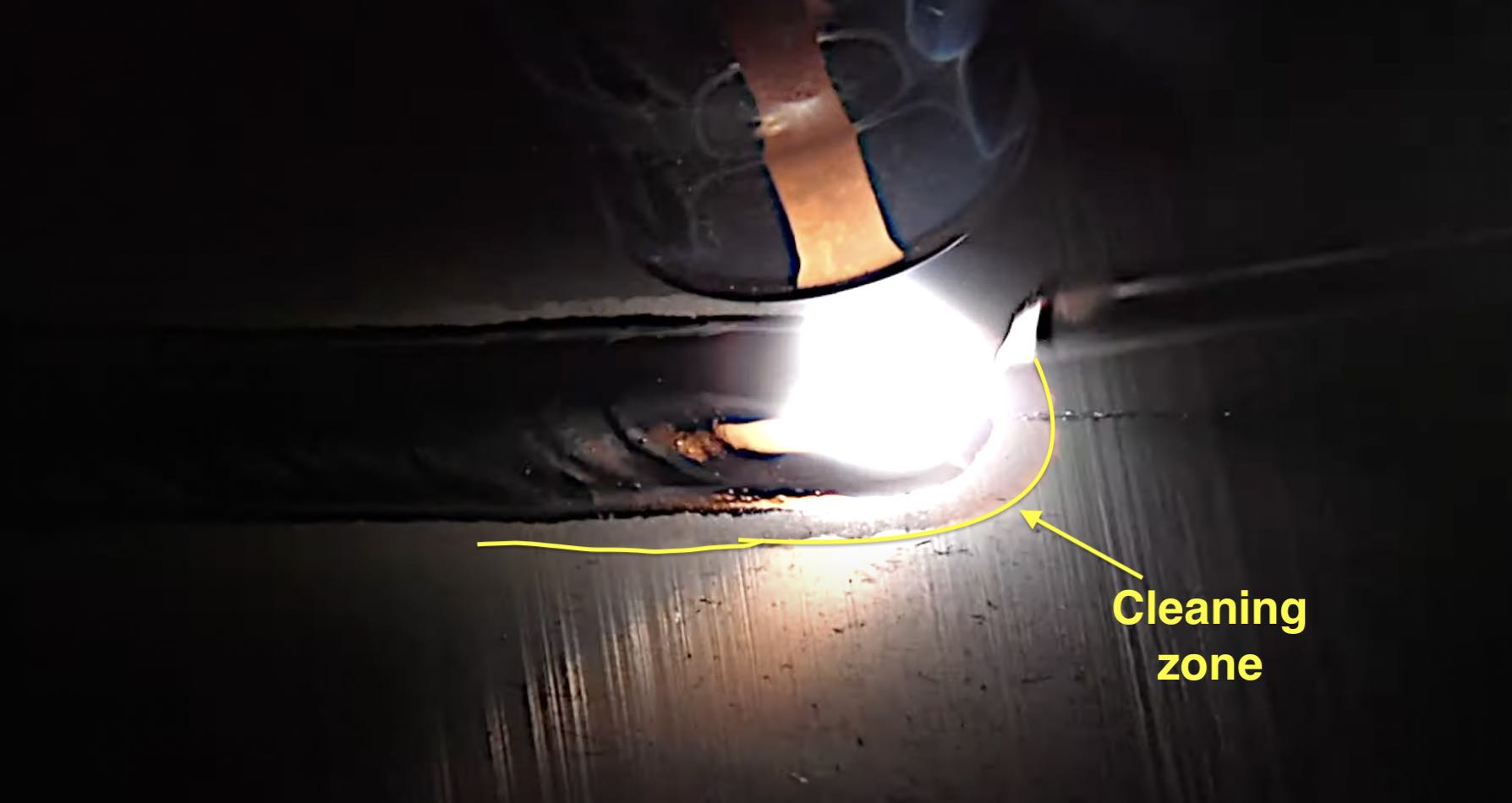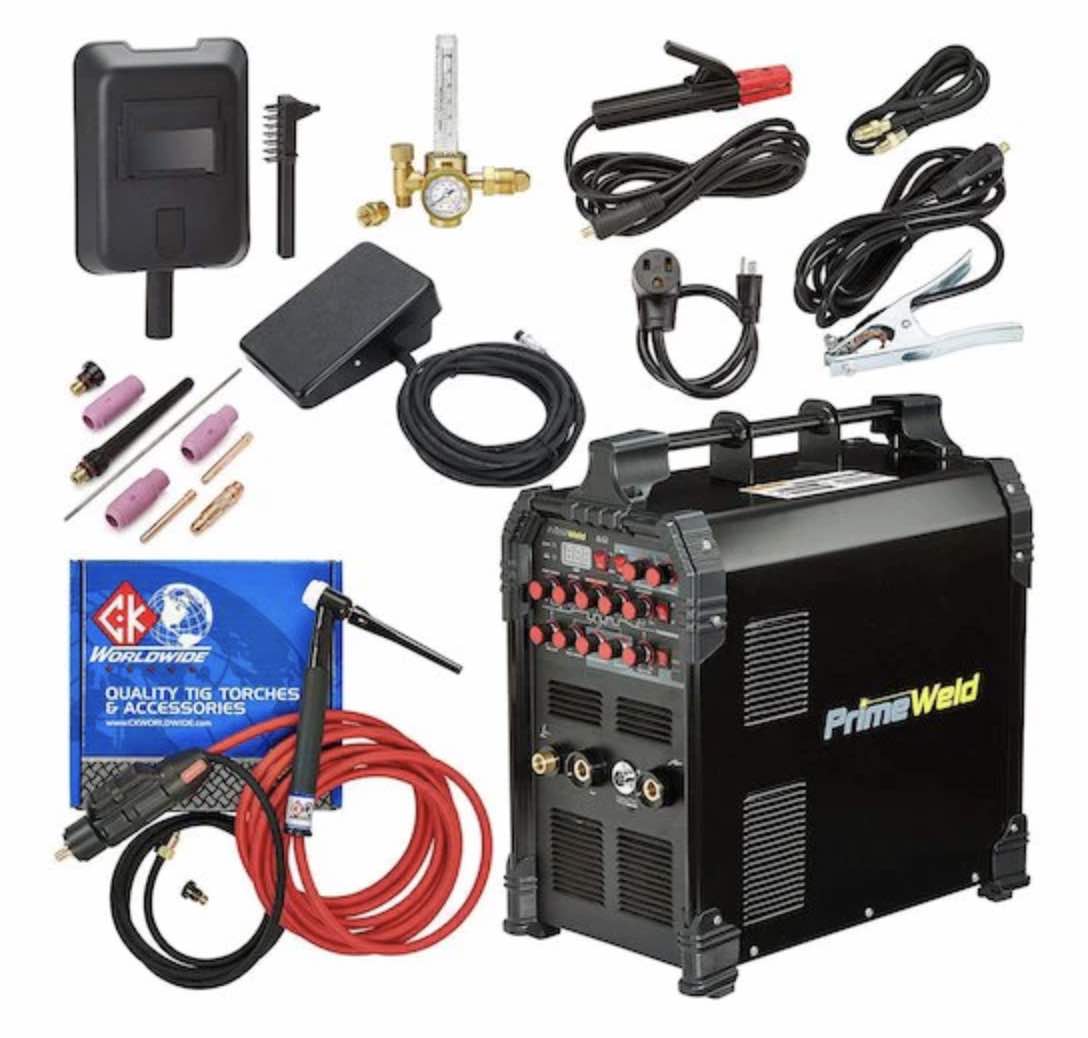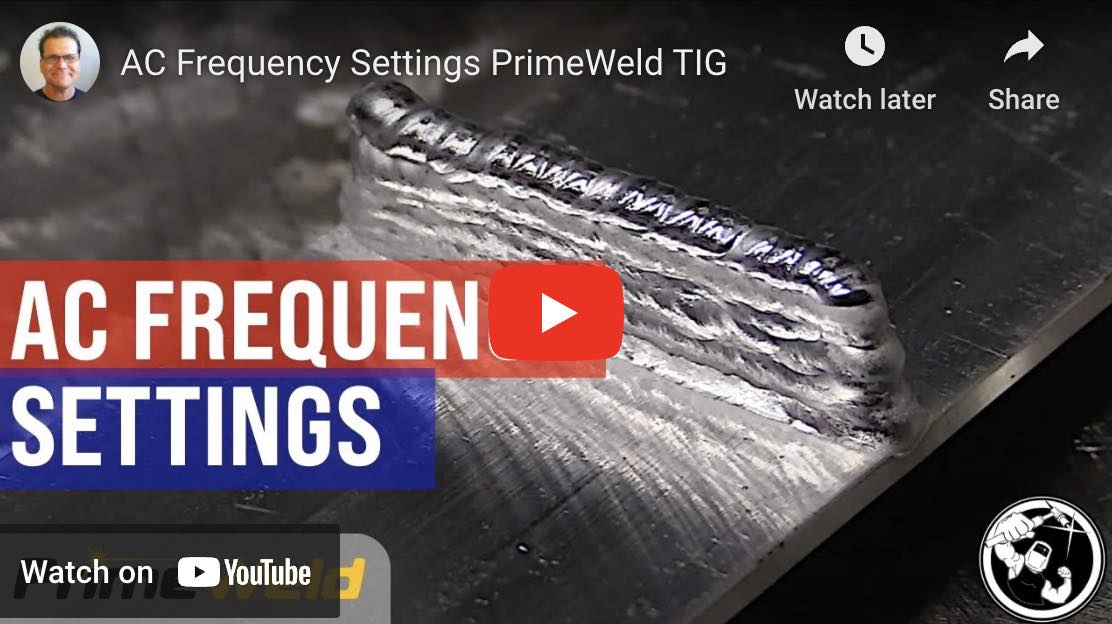AC Balance for TIG welding Aluminum
- HOME
- TIG WELDING ALUMINUM
- How to Tig Aluminum
- Ac Balance
Alternating Current is used to TIG welding aluminum because it cleans the oxide layer that is on all aluminum.
AC Balance is the Setting on most newer TIG welding machines that allows you to adjust the level of cleaning action you need according to the task.
AC current is a mixture of electrode positive and electrode negative.
The cleaning action that is needed for breaking up oxide layers, is provided by the electrode positive portion of Alternating current.
Too little cleaning action and the puddle will be milky and might even have some trash floating around like little black dots.
To much cleaning action and your tungsten will get too hot and might give you a very unstable arc.

The AC balance control feature determines the amount of time during each half-cycle that the current flows in the electrode positive and electrode negative directions.
The AC balance control typically ranges from 30% to 70% or more. A balance setting of 50% means that the positive and negative currents are equal, and they each occupy half of the AC waveform cycle.
However, by adjusting the AC balance control, you can favor either the positive or negative cycle for more or less cleaning.
When you increase the electrode positive (EP) time or decrease the electrode negative (EN) time, you are increasing the AC balance towards the EP side. Conversely, when you increase the EN time or decrease the EP time, you are increasing the AC balance towards the EN side.
The AC balance control has a direct impact on the welding characteristics and the resulting weld bead appearance. Here are some key effects of adjusting the AC balance:
- Cleaning action: The electrode positive (EP) portion of the cycle provides better cleaning action, which is beneficial for removing oxides, from the workpiece surface. This is particularly important when welding aluminum that is not perfectly clean. Increasing the EP time by adjusting the AC balance towards the EP side enhances cleaning action.
- Penetration and heat input: The electrode negative (EN) portion of the cycle provides greater heat input and deeper penetration into the workpiece. Increasing the EN time by adjusting the AC balance towards the EN side enhances penetration.
- Arc stability: Proper AC balance contributes to maintaining a stable arc. Unbalanced AC can result in an unstable or erratic arc, leading to an inconsistent arc.
The AC balance setting depends on the specific welding application, the type of metal being welded, and the desired weld characteristics. Welders often experiment and fine-tune the AC balance to achieve the best results for a particular job.
Cup size, argon flow rates, and even humidity can have an effect on how you set the AC balance.
It's important to note that not all TIG welding machines have an adjustable AC balance control. Some machines like the miller diversion have fixed AC balance settings, typically set to around 70%.
More on AC Balance
AC balance, also known as AC balance control, is a valuable feature found on TIG (Tungsten Inert Gas) welding machines. It refers to the ability to adjust the proportion of time spent welding with the electrode positive (EP) and electrode negative (EN) during the alternating current (AC) welding process.
Here are some reasons why AC balance is considered a good feature on a TIG welding machine:
- Control of heat input: AC balance allows you to control the amount of cleaning action vs penetration. For example, a higher EN balance concentrates more heat into the workpiece, making it suitable for welding thicker materials, while a higher EP balance increases cleaning action but heats up the tungsten electrode more.
- Cleaning action: TIG welding produces a cleaning effect on the surface of the metal due to the EP cycle. The EP cycle generates an arc that helps remove oxides from the base metal. By adjusting the AC balance, welders can enhance or minimize this cleaning action, depending on the application requirements.
- Arc stability and control: AC balance affects the stability and control of the welding arc. An unbalanced AC wave can result in an erratic or unstable arc, which can lead to an erratic arc. By adjusting the AC balance, you can get a stable arc with precise control.
- Reduced tungsten erosion: During AC TIG welding, the tungsten electrode tends to ball up due to the EP cycle. By adjusting the AC balance towards the EN cycle, welders can reduce tungsten balling and minimize tungsten erosion, leading to a longer lasting tungsten tip.
- Versatility for different materials: AC balance provides flexibility for welding a wide range of materials, including aluminum, magnesium, and pot metal.
AC balance is a valuable feature on a TIG welding machine as it allows welders to control bead width, enhance cleaning action, achieve arc stability, reduce tungsten erosion, and offers versatility for welding different levels of oxidation on aluminum parts.

















